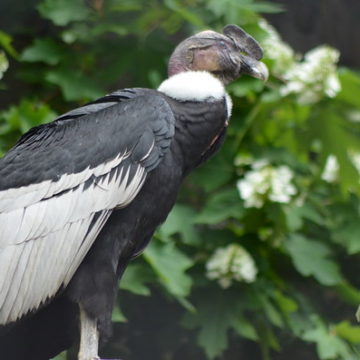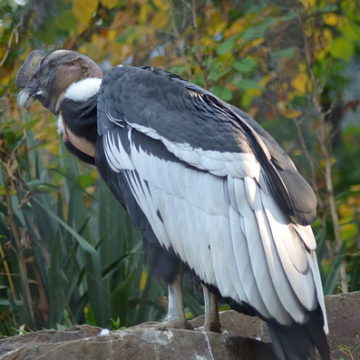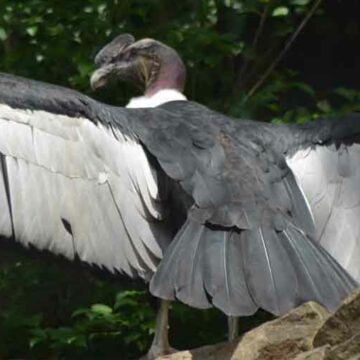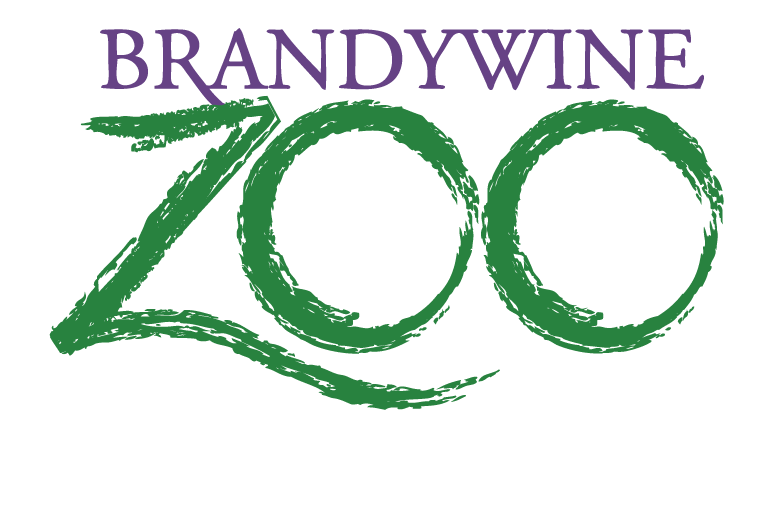ANDEAN CONDOR
VULTUR GRYPHUS
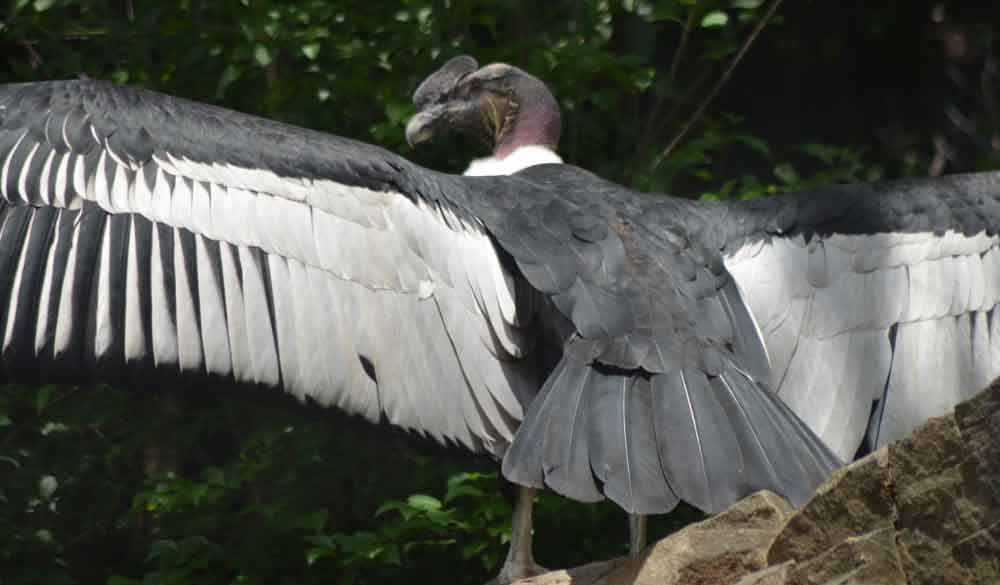
HABITAT
They live along the rocky cliffs and tree perches of the mountains.
GEOGRAPHIC REGION AND RANGE
Found in South America along the Andean Mountain chain from Venezuela to the Strait of Magellan including Venezuela, Colombia, Ecuador, Peru, Bolivia, Peru, Argentina and Chile.
DIET
Carnivores and scavengers. Carrion eaters, which means they primarily eat large carcasses (goat, cattle, sheep, deer, horse and coyote).
PHYSICAL DESCRIPTION
The body is feathered in black with large white patches on the underside of the wings and white, downy feathers surround the neck. Male condors have a rigid piece of skin called a “comb” on top of their heads, as well as golden-colored eyes.
LIFESPAN
Natural Habitat: 50 years
Under Human Care: 75+ years
THREATS
Andean condors are listed as endangered in Colombia, Venezuela, and Ecuador and vulnerable across many other countries in South America. This species is persecuted by livestock farmers who worry about their lambs and calves and by seabird guano workers attempting to keep condors from scavenging on chicks. They are captured for traditional rituals, collide with power lines, and are losing food sources to habitat loss and competition with feral dogs. The persecution of mountain lions and foxes through the illegal poisoning of carcasses also results in secondary poisoning of condors and other vultures throughout their range. Increased tourism in parts of Chile and Argentina may have led to a reduction in persecution by demonstrating the ecotourism value of the species (S. Imberti in litt. 2003).
STATUS
Vulnerable
FUN FACTS
The Andean condor is the national bird of half of the countries in South America and plays an important role in folklore and mythology throughout the Andean region.
In July of 1942, the first Andean condor hatched in a US Zoo was born at the San Diego Zoo.
The oldest known Andean Condor was 79 years old.
A group of vultures is called a wake, committee, venue, kettle, or volt. The term kettle refers to vultures in flight. Committee, volt, and venue refer to vultures resting in trees. A wake is reserved for a group of vultures that are feeding.
A vulture’s stomach acids are so strong, they can even dissolve metal!
What are AZA Zoos doing for Andean Condors?
Andean Condors are part of a managed conservation breeding program. The Yellow level SSP, managed by the Raptor TAG, supports in-situ field research which places telemetry devices on adults to study ranges and territories. Brandywine Zoo regularly supports this program financially.
Since 1989, over 60 of these spectacular birds have been hatched and reared in US zoos, and some have been released in the remote regions of Colombia. Since 1989, 68 Andean condors, raised in American and Colombian zoos, have been released in Colombia, Venezuela, and Peru in an attempt to re-establish the birds in their range countries. As of 2018, 69 Andean condors live in 32 AZA facilities.
More images of our Andean Condors

